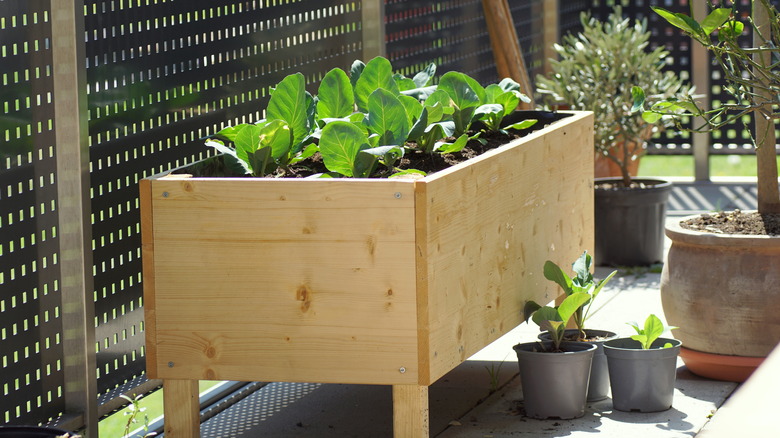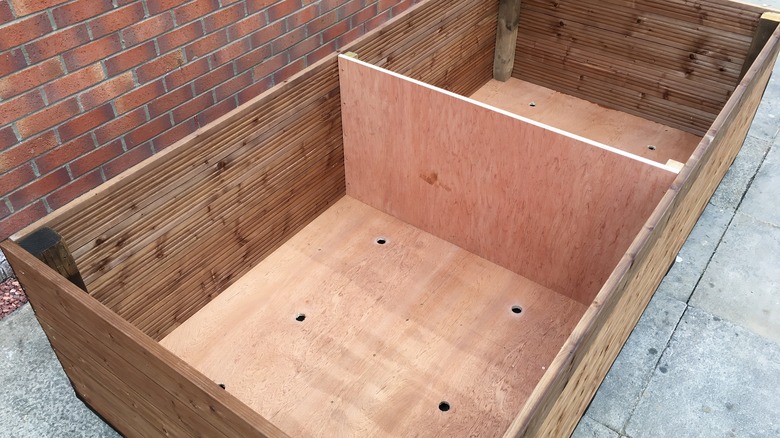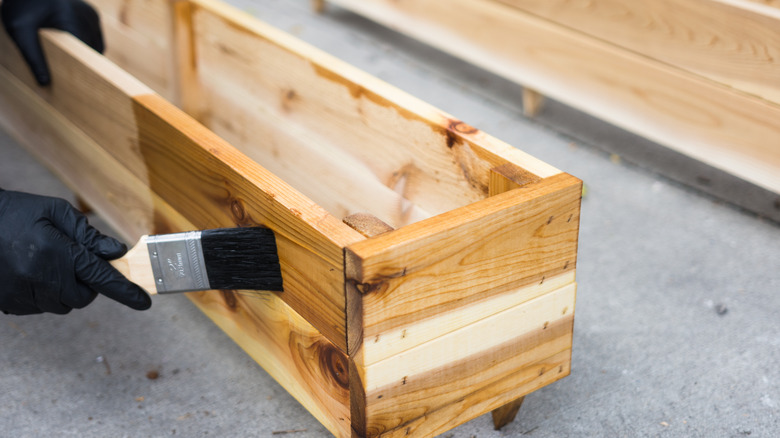Essential DIY Wooden Planters Tips For Thriving Plants
We may receive a commission on purchases made from links.
If you want to make your home, yard, or patio as lively as possible, growing some additional plants is always a great idea. Planters give you plenty of places to put your plants, even with little space, and add more greenery around the home. You can also create your own planters out of wood, like wooden containers and old wooden fencing, to DIY planter boxes on a budget.
While wooden containers look great, there are some important things to know before making your own. Using repurposed wood isn't always safe – particularly if you're planning to grow vegetables, herbs, or anything you'll eat — as some are chemically-treated. Particularly old wood may even contain arsenic, which is more likely within old wooden pallets or railroad ties. Although there are many places to find free pallets near you, research to make sure they weren't treated with chemicals. Check to see if old, painted containers have lead by using a lead test kit from a hardware store.
Pressure-treated wood should be also avoided, as they may contain chemical preservatives that can leach into the soil of what you're growing. While this is probably in low amounts, it's better to be as safe as possible. You can identify older pressure-treated wood by its olive green appearance. Newer pressure-treated wood may have a stamp indicating it has been pressure-treated. After examining your wood to ensure a safe planter, there are many steps to ensure that your plants will be well taken care of.
How to repurpose a wooden container as a planter
When repurposing a wooden container as a DIY planter, the first thing you'll want to do is check the drainage carefully. If there are no holes in the bottom of your planter, you should drill some to allow for adequate drainage. Another step you don't want to forget when gardening in wooden planter boxes is lining the inside. It's best to add a plastic liner to the inside to ensure the wood won't rot and deteriorate too quickly from contact with soil and water.
You'll also want to carefully choose which plants you grow. Consider the size of the container and ensure there's enough room for the plant's roots to grow. Deeper containers are usually ideal. However, shallow containers may work well for succulents and plants with shallow roots. Additionally, be sure to pay attention to what's below the planter. You'll want to add a tray or another barrier below the planter if you place it above a wood deck or anything else that could be damaged by moisture.
How to preserve wood containers
If you have found the perfect wood container to DIY as a planter, you probably want to ensure it lasts as long as possible. As mentioned above, growing food or vegetables in a container coated with chemicals is a big mistake. However, if the plants you grow will only be for aesthetic purposes, it's usually not a problem. You may even want to add a wood preservative to an untreated wood planter yourself to extend its life.
It's generally okay to use a wood preservative that has chemicals for plants that are only for decoration, but you should definitely be more careful with planters you'll use for growing food. You'll need to look for a non-toxic and food-safe wood preservative to use. One example is the Seal It Green Garden Box Sealer, which can be found online or at Walmart for around $47. If you're growing food, consider using beeswax as a natural preservative. If using a store-bought preservative, check it carefully to ensure it's non-toxic and will be safe for growing food.


